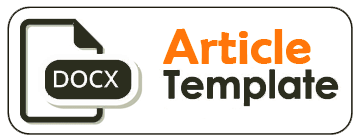Article Retraction & Withdrawal
1. Article Retraction
Retraction is a mechanism for correcting published information that is found to be seriously flawed or compromised. Retraction serves to maintain the integrity of the scholarly record and to notify readers of significant issues in the published work.
Grounds for Retraction
An article may be retracted if:
- There is clear evidence that findings are unreliable due to misconduct (e.g., data fabrication or falsification) or honest error (e.g., miscalculation or experimental error).
- The article contains plagiarism.
- The work has been published elsewhere without appropriate cross-referencing or permissions (redundant publication).
- Ethical violations are discovered, such as failure to obtain informed consent or lack of ethical approval for research involving humans or animals.
- A conflict of interest that compromises the objectivity of the article is revealed.
Retraction Process
- The editorial board will investigate allegations with due diligence, involving authors and, if necessary, reviewers or external experts.
- Retraction notices will clearly state the reasons for retraction, who initiated the process, and evidence supporting the decision.
- The original article will remain on the journal’s website but will be watermarked with the word “Retracted”, and the retraction notice will be linked to it.
Retraction Notice
The retraction notice will include:
- Title of the article and authorship details.
- Reason(s) for retraction.
- A statement emphasizing the integrity of the scholarly record.
2. Article Withdrawal
Withdrawal refers to the removal of an article prior to its official publication in an issue, typically during the pre-publication or early stages of production.
Grounds for Withdrawal
An article may be withdrawn if:
- The manuscript contains errors or issues identified by authors after submission but before publication.
- Ethical issues or conflicts of interest are identified during the editorial process.
- Duplicate submission is discovered (submission to multiple journals simultaneously).
- The authors request withdrawal for personal or professional reasons, and the editorial team consents to the request.
Withdrawal Process
- Authors wishing to withdraw their submission must submit a formal request to the editorial office, providing valid reasons.
- If the editorial board identifies issues, they will notify the authors and, if necessary, proceed with the withdrawal.
- A withdrawn article will be removed from the submission queue and will not appear in any journal records.
Withdrawal Penalty
- If an article is withdrawn due to unethical practices (e.g., duplicate submission or authorship disputes), the journal reserves the right to blacklist the authors from future submissions.
- Institutions or funding agencies may also be informed of unethical conduct, if applicable.






